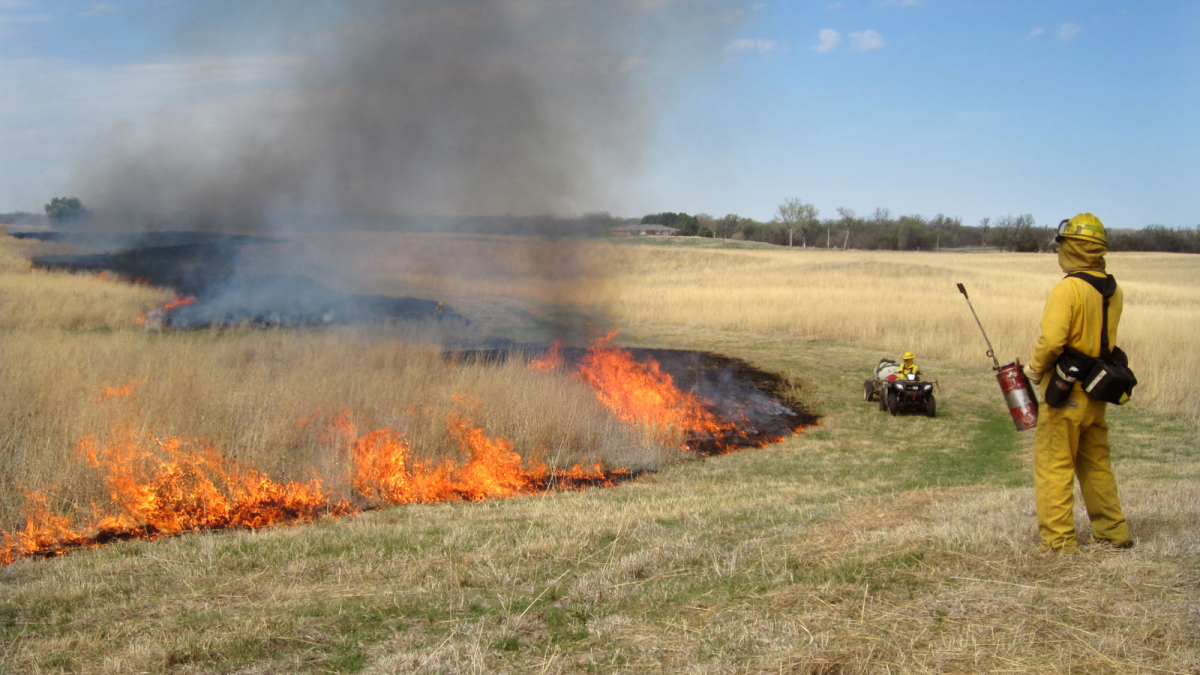
Lincoln, Neb. —On almost any given day, a person can drive by grazing land owned by The Nature Conservancy in Nebraska and see an artist in residence.
The conservancy’s science director, Chris Helzer, told National Science Foundation Research Traineeship students recently that the environmental group uses cows as “habitat artists” to build resilience in grasslands.
He said the conservancy is experimenting with various methods of creating a “shifting mosaic” of habitat patches. That mosaic includes patches intensely grazed for a full season or more and patches in stages of recovery from grazing. In some sites, the conservancy combines prescribed fire with grazing in a system called “patch-burn grazing.”
Resulting land has patches each providing a different habitat through plants of varying height and density. Over about four years, each patch cycles through those variations, supporting diverse animals and plants.
“To get those different kinds of habitat structure, we use cattle or bison as habitat artists, meaning that we use their selective grazing to create those habitat structures because they will eat some plants and not others, and that changes based on the conditions we put them in,” Helzer said.
The Nature Conservancy sees the diversity of plants and animals in their prairies as a sign of the resilience of the land, he said.
“The more richness of species you have, the more redundancy there is in the roles that those species play,” he said. “So, if one can't fill its role, there is another one that will probably do something similar to maintain the overall function of the system.”
Neither grazing nor burning land are new land management techniques. Indigenous people in the United States set fire to land to attract grazing bison and for other reasons, but few Nebraska ranchers combine the two techniques to manage their land, Helzer said.
So far, patch-burn grazing and other shifting mosaic approaches on The Nature Conservancy land seem to be building the resilience of agricultural land, he said.
“What we're seeing is that we're not losing plant species. We're maintaining the richness or the diversity of the plant community, even though we’re throwing all these things at it, which is a sign of resilience, I think, within that plant community but also a sign that what we're doing makes sense in terms of facilitating diversity, which is what we want to do,” he said. “We also see evidence that a big variety of wildlife species, from insects to birds, are using that full range of habitat heterogeneity.”
The Nature Conservancy is also working to demonstrate these fire and grazing strategies to Nebraska ranchers. Helzer said that while some patches are overgrazed and others are undergrazed in a cycle, the grazing pressure averages out, over time, to what most ranchers would consider a reasonable stocking rate. Still, persuading ranchers to try such land management strategies can be difficult, he said.
“It can make ranchers really uncomfortable to see the intensity and duration of grazing at some of our sites,” he said.
Ranchers have been taught not to let cattle overgraze or expose bare soil, but The Nature Conservancy cattle can graze grass really short for a full season or more, often immediately after a burn, Helzer said.
“Seeing that can make some ranchers physically ill, and I'm not exaggerating that,” he said. “I've had ranchers stand next to me and they just can't look. They want to turn away because it's against everything they've been taught about good pasture management.”
Helzer said it’s up to the conservancy to show that their methods don’t degrade the land over time as they work to create better habitat, even though similar approaches have been supported by academic science in other parts of the Great Plains.
“We have been using variations of our current approaches for 20 to 30 years or more in some places and haven’t seen noticeable changes in productivity,” he said, “but we’re also trying to collect better data to test that more robustly.”
Such evaluation often includes scientists with universities or other organizations, and findings are passed along to organizations like the Natural Resources Conservation Service, Nebraska Game and Parks Commission, U.S. Fish and Wildlife Service, and Pheasants Forever to disperse to ranchers.
Helzer said most ranchers he has met are thoughtful land stewards and the conservancy isn’t trying to advocate for a specific grazing system or to tell ranchers they’re doing anything wrong.
“We certainly would never try to say, ‘Here's a system you should use,’” he said. “We might, though, say, ‘Here are some principles or lessons that might let you tweak your management to maintain the same productivity while creating better habitat for prairie chickens, deer, pollinators, or whatever.’”
— Ronica Stromberg, NRT Program Coordinator